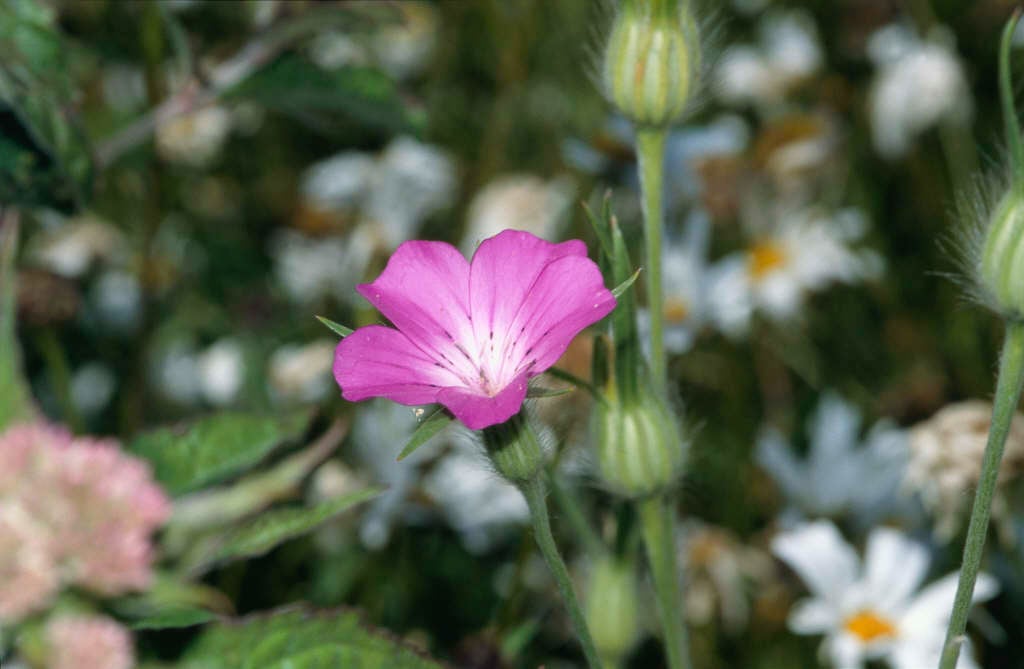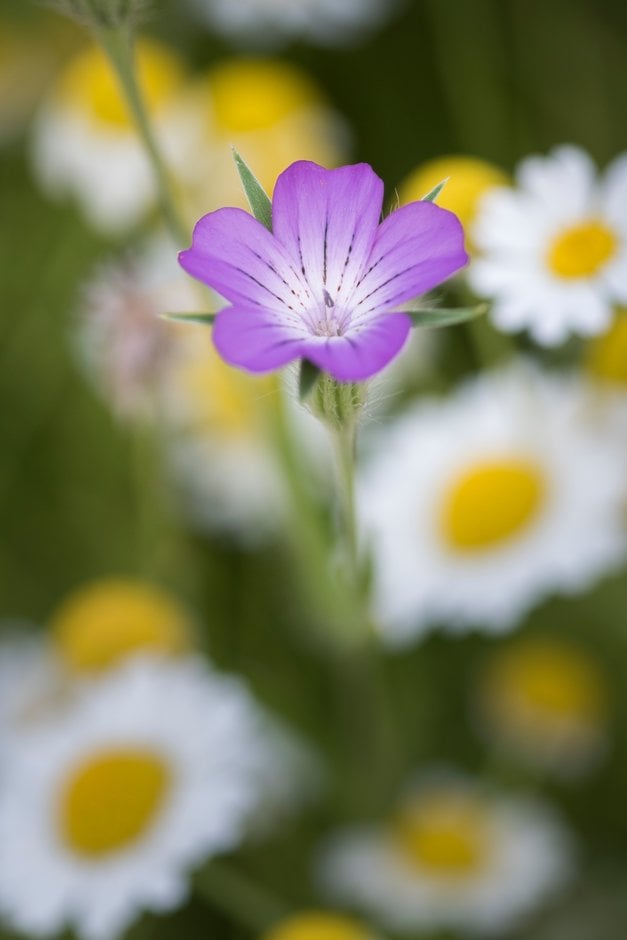Agrostemma githago
corncockle
A branching, upright annual about 60-90cm tall, with narrow grey-green leaves to 8cm long, and open funnel-shaped magenta-purple flowers 5cm across, produced in summer
Other common names
bastard nigellacorn cockle
see morecorn pink
gith
joy of love
little and pretty
bulwg yr ŷd
Synonyms
Agrostemma nicaeenseSize
Ultimate height
0.5–1 metresTime to ultimate height
1–2 yearsUltimate spread
0.1–0.5 metresGrowing conditions
Moisture
Well–drainedpH
Acid, Alkaline, NeutralColour & scent
| Stem | Flower | Foliage | Fruit | |
| Spring | Green Grey Silver | |||
|---|---|---|---|---|
| Summer | Purple | Green Grey Silver | ||
| Autumn | ||||
| Winter |
Position
- Full sun
Aspect
South–facing or West–facing
Exposure
Exposed or Sheltered Hardiness
H5Botanical details
- Family
- Caryophyllaceae
- Native to GB / Ireland
- Yes
- Foliage
- Deciduous
- Habit
- Clump forming
- Potentially harmful
- Human/Pets (dogs, poultry): Harmful if eaten. Wear gloves and other protective equipment when handling For further information and contact numbers regarding pets, see the HTA guide to potentially harmful plants
- Genus
Agrostemma are upright annuals with narrow, opposite leaves and solitary, 5-petalled, open trumpet-shaped flowers with long calyx lobes showing between the petals
- Name status
Correct
- Plant range
- SE Europe to Iran
How to grow
Cultivation
Grow in poor, well-drained soil in full sun. Lax growth needs to be staked. Flowers are suitable for cutting and are attractive to bees
Propagation
Propagate by seed sown in-situ, self-seeds prolifically
Suggested planting locations and garden types
- Wildlife gardens
- Cottage and informal garden
- Wildflower meadow
- Cut flowers
- Flower borders and beds
Pruning
Deadhead to prolong flowering. Cut back after flowering is finished
Pests
Generally pest-free
Diseases
Generally disease- free
Love gardening
Sign up to receive regular gardening tips, inspiration, offers and more
View our Privacy Policy
Get involved
The Royal Horticultural Society is the UK’s leading gardening charity. We aim to enrich everyone’s life through plants, and make the UK a greener and more beautiful place.

